Red Wolves and Golden Mice, North Carolina 2022
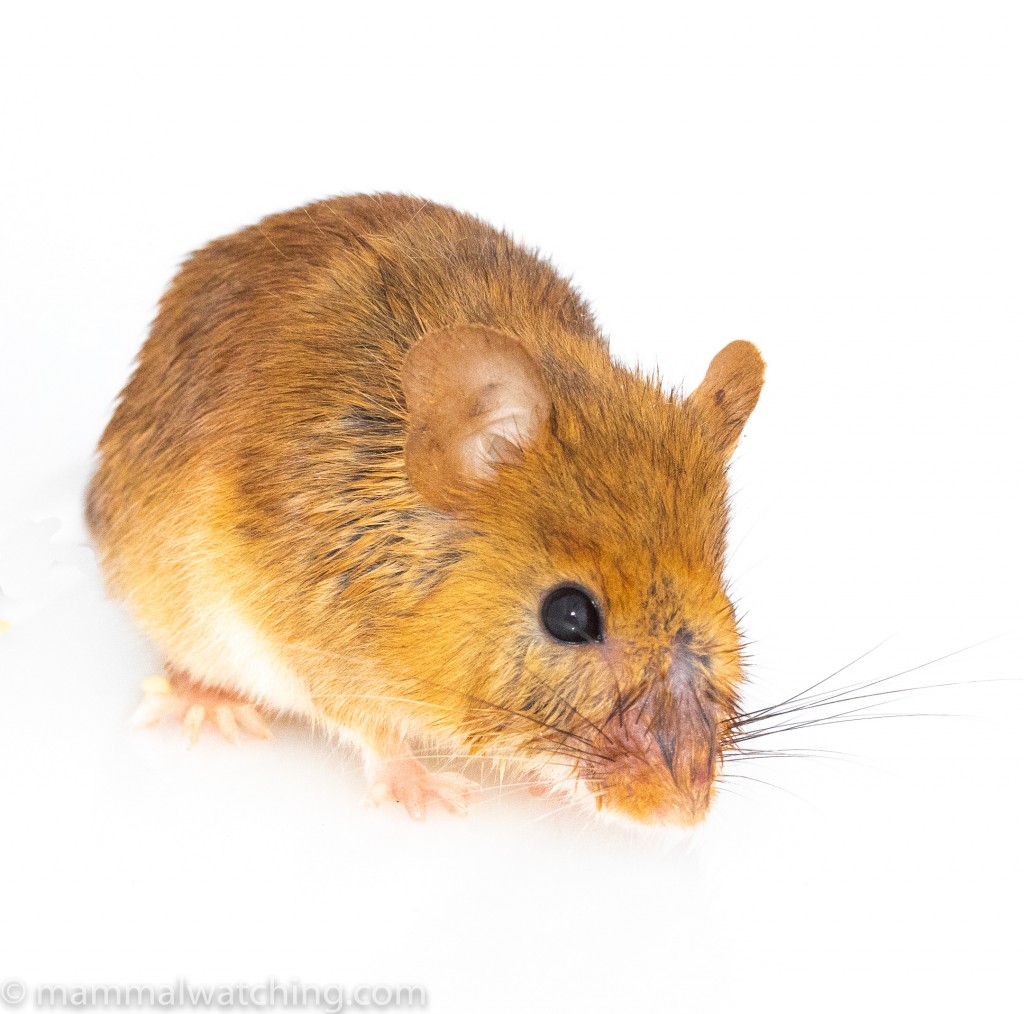
Golden Mouse, Ochrotomys nuttalli
I well remember my excitement when I visited the Alligator River National Wildlife Refuge in North Carolina back in 1989. This was my first trip to the USA. I hadn’t even considered starting a mammal list back then, but I was enthralled at the idea of seeing a Red Wolf. One of the very first mammals I made an effort to look for now I think about it. Even if “making an effort” back then meant an hour’s drive into the park and a chat with a ranger who made it quite clear I had zero chance of seeing one.
So why did it take me 33 years to return to North Carolina in search of this species? I have no excuse. Thankfully Todd Pusser, a Virginia Beach-based photographer, whale researcher, naturalist and all-round good guy, came to the rescue.
Todd has been following mammalwatching.com for years and had gotten in touch a few months earlier to recommend we interview his friend Bob Pitman for the mammalwatching podcast (see Episode 17). He also offered to show Charles Foley and me around the Outer Banks. With his help he thought we would have a good shot at seeing a Red Wolf.
Quicker than you can say “Canis rufus” Charles and I were booking flights to Norfolk Airport for a long weekend at the end of February.
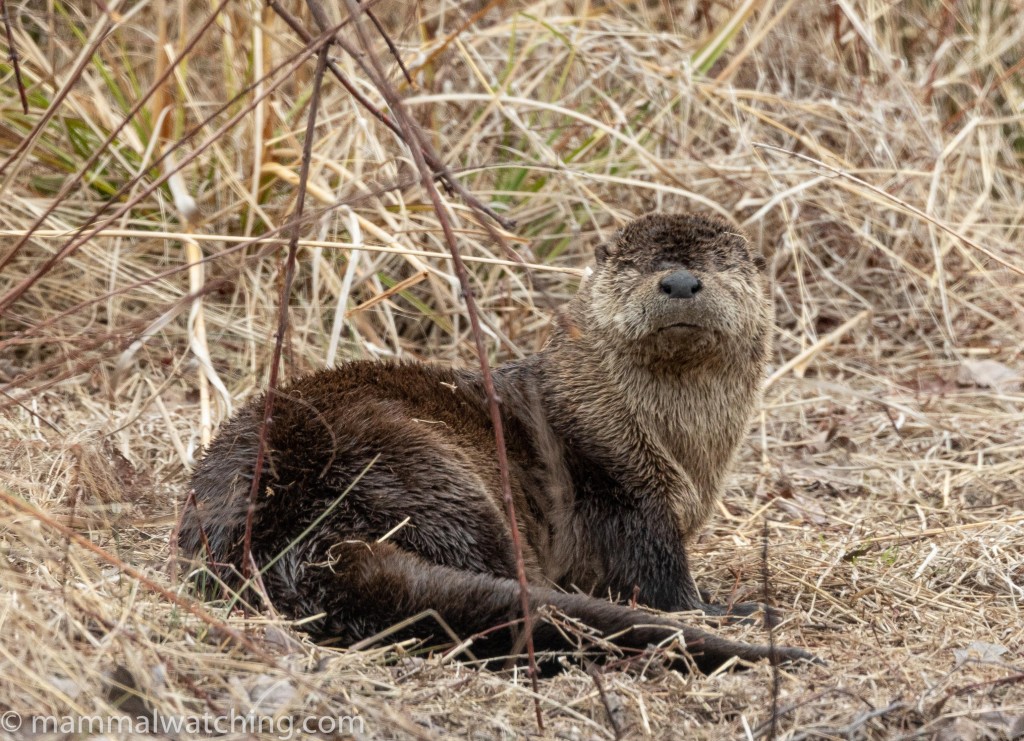
North American River Otter, Lontra canadensis
When we started chatting with Todd it was clear that coastal North Carolina had more than Red Wolves for me to get excited about. Golden and Eastern Harvest Mice in the forests. Occasional Harp and Hooded Seals on the beach. Todd could hear the naked greed in my voice and said he would see what he could do.
We spent three nights in an AirBnb in Nag’s Head on the Outer Banks and a last night back in Virginia Beach with Todd and his family.
Alligator River National Wildlife Refuge
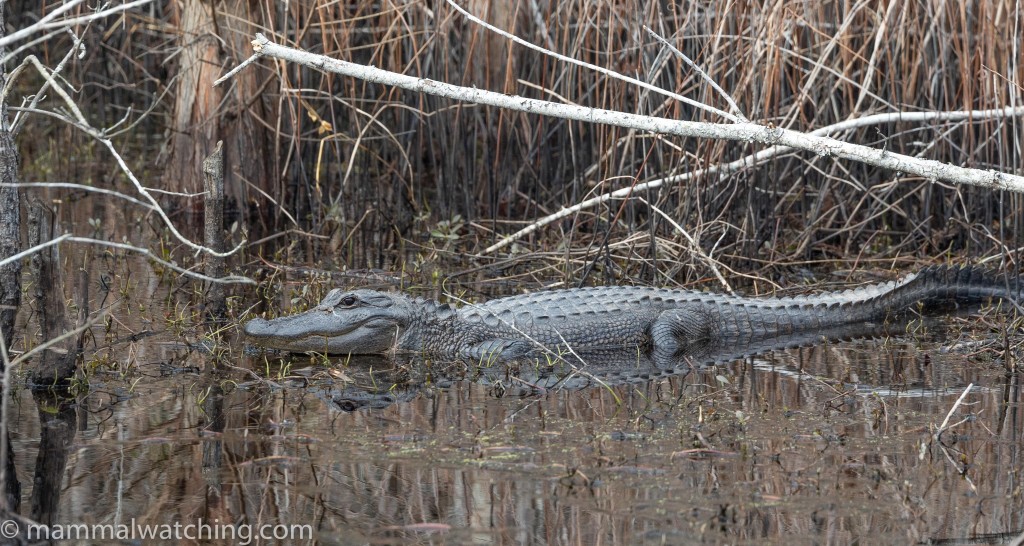
Alligator. River. Alligator River.
Red Wolves were the weekend’s main event and so our initial focus was to find one of the 25 animals remaining in the wild. Todd knows many of the biologists in the area and so knew where animals had been recently seen. That intelligence was key. Finding a wolf was still looking for a needle in a 150,000 acre haystack: but with Todd’s insider information we had a chance.
Todd’s general strategy was to crisscross the roads in the north of the reserve and hope to spot a wolf crossing the road or open ground. In February at least the animals can be active at any time of the day or night, although the reserve itself is only open from sunrise to sunset. Spotlighting is very strictly prohibited.
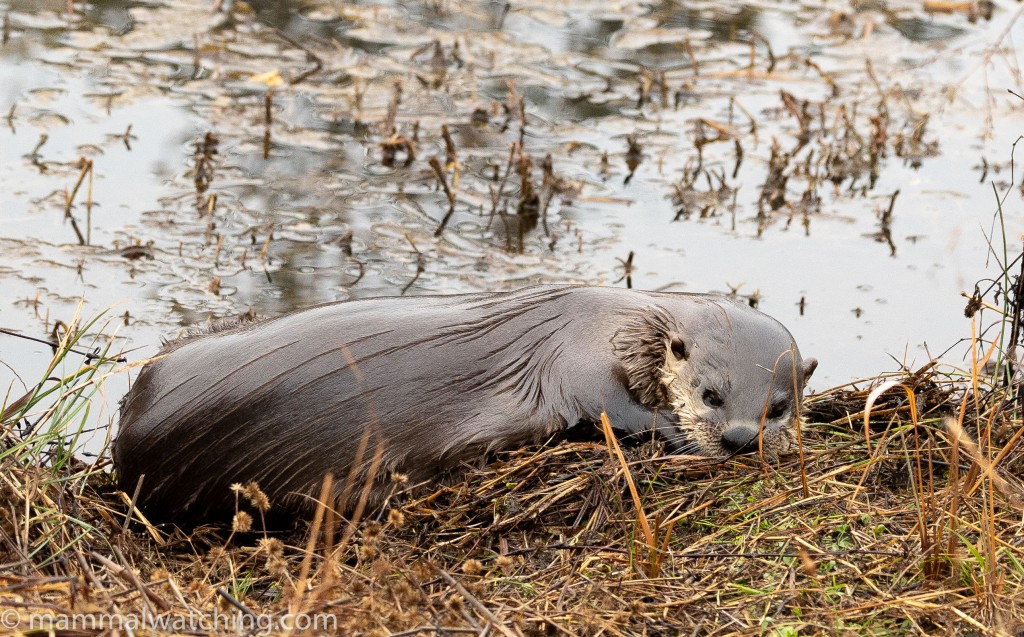
North American River Otter, Lontra canadensis
The Red Wolf reintroduction story is a parable of so much of life in 21st century USA. Polarised opinion, lawsuits and attempts to muddy science for political gain.
At the risk of over-simplifying the story seems essentially to be this.
Red Wolves were once common through the south-central and south-eastern USA. But, like wolves everywhere, they were persecuted. Predator control, coupled with habitat loss and hybridisation with coyotes, led to the species being declared extinct in the wild in 1980.
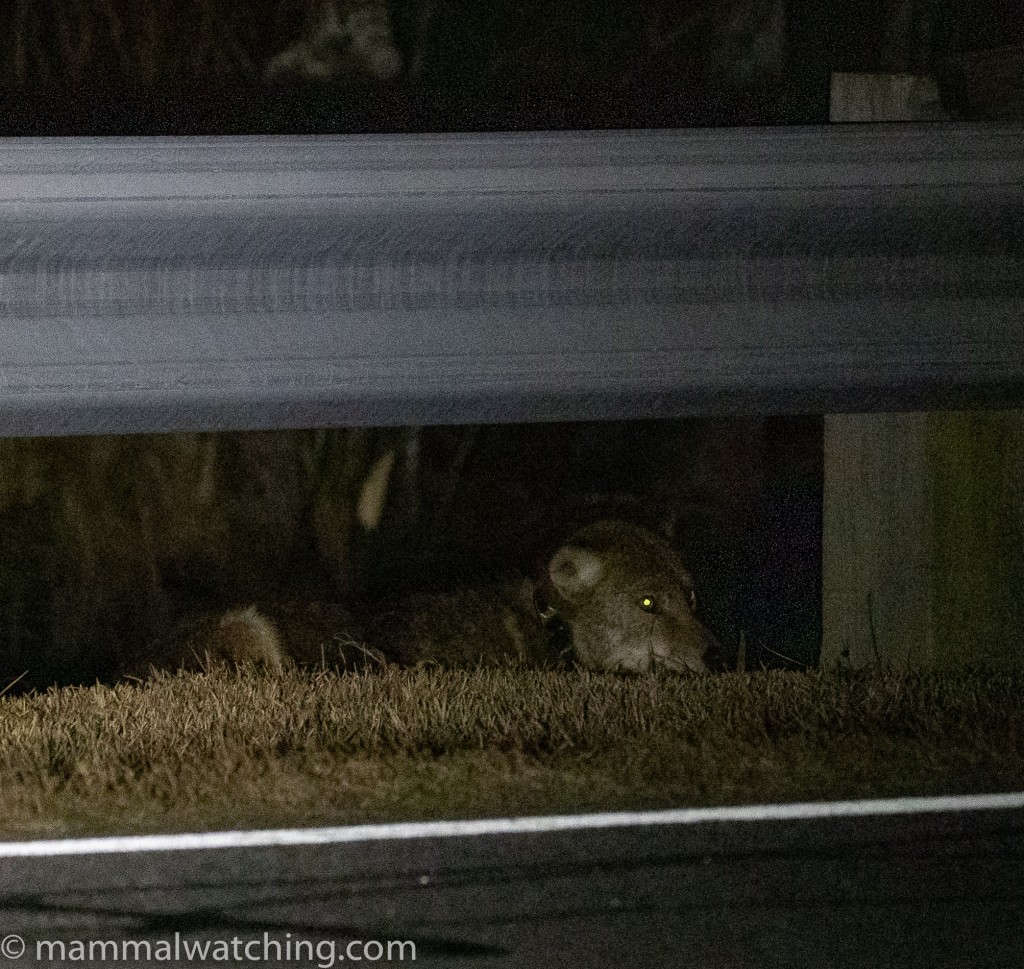
Red Wolf, Canis rufus
A few animals survived in zoos and they provided the gene pool for a reintroduction into the Alligator River NWR in 1987. The population was initially quite successful: 60 animals were released between 1987 and 1994 and by 2012 as many as 120 wolves were living in the refuge. But, guess what? Local landowners weren’t happy, worried the wolves were killing livestock and the deer they liked to hunt. So while the Fish and Wildlife Commission (FWS) were working to protect the species, the state’s Wildlife Resources Commission was working to stop them.
There were lawsuits. The state argued that Red Wolves were Coyote-Wolf hybrids rather that a unique species and should not be protected (their campaign was effective, and it was likely this smear on the animals’ taxonomy that had put me off making an effort to see one). The FWS were ordered to stop protecting the animals and local landowners were granted licences to kill several. A ban on hunting coyotes, during both day and night was lifted, and of course there were cases of ‘mistaken’ identity.
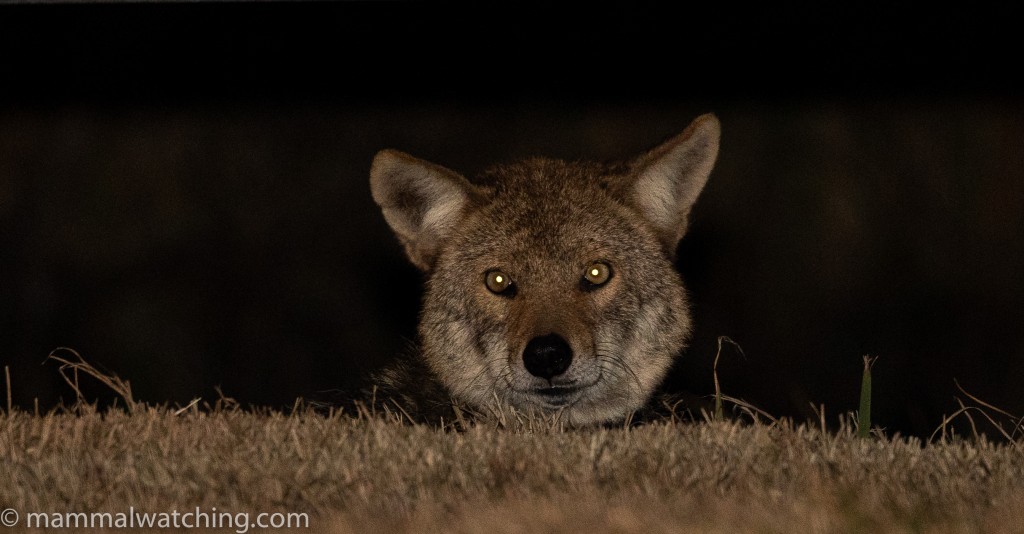
Red Wolf, Canis rufus
The good news is that in 2019 the National Academy of Sciences declared Canis rufus a distinct species, and the FWS are once again reintroducing wolves to the refuge. Animals are still being shot, and being hit by a vehicle seems to be the leading cause of death at the moment. Someone should make a miniseries. Also, when will the National Academy of Sciences help with the mammalwatching checklist?
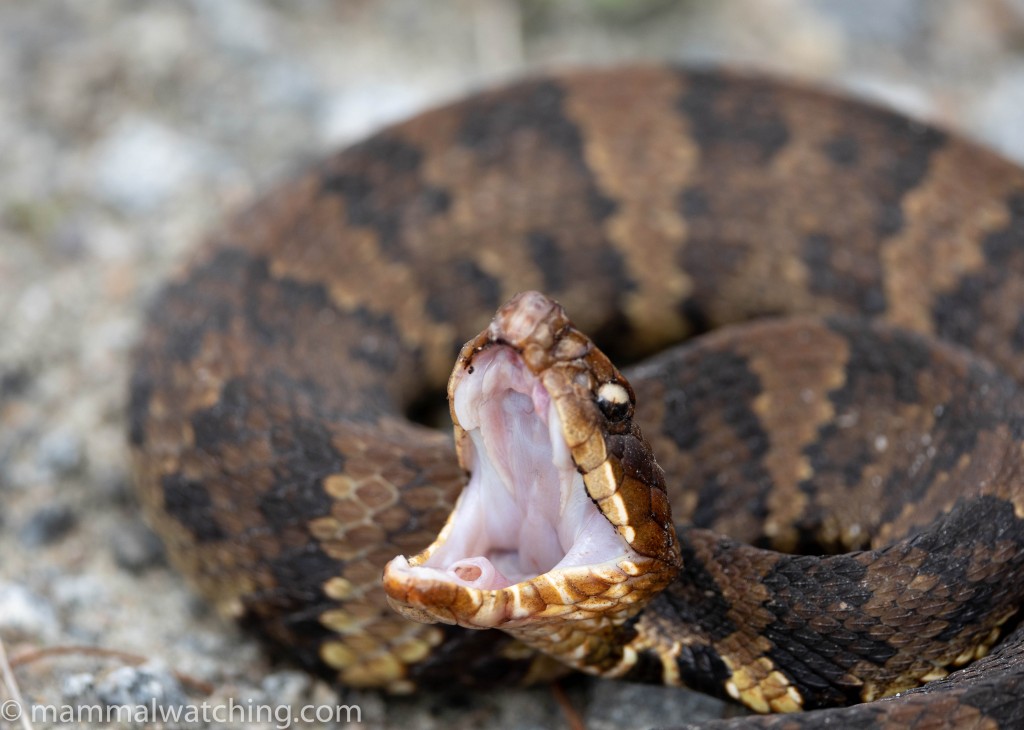
Cottonmouth
The night we arrived Todd took us along Route 264 for a couple of hours. It had rained recently and there was a chance we might spot carnivores – Bears, Bobcats or Wolves – feeding along the edge of the largely deserted road. We only saw a couple of Raccoons and an Opossum. I was impressed at how empty of people the area was.
On Friday we were on the road at 6am and Todd spent 16 hours driving us around the reserve. Alligator River is a beautiful area, with abundant wildlife and very few visitors.
The few people we did see were there for the wildlife. A bunch of birders were patrolling the swamp in search of an Ash-throated Flycatcher. Others were looking for bears: Alligator River NWR has an extraordinary density of Black Bears and Todd has seen as many as 43 in a day during the summer.
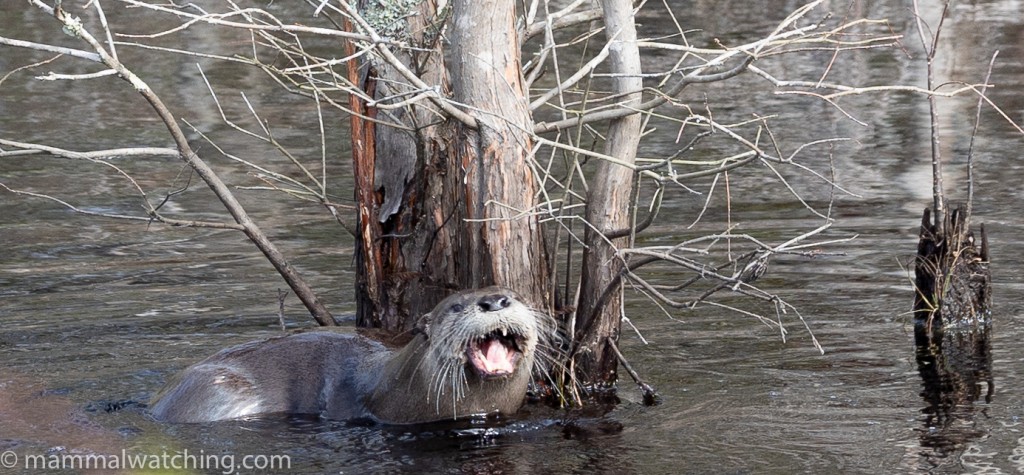
North American River Otter, Lontra canadensis
The refuge is also a great place to see Bobcats and River Otters. Though we didn’t see any cats, we did see several Otters over the weekend patrolling the network of canals and creeks that cross the reserve.
By late afternoon Todd was surprised we hadn’t seen any bears. But at dusk, once we unpacked our thermal scopes, the bears emerged. We saw several feeding in fields.
We had to leave the reserve at sunset. After a game of “do you have anything at all on the menu tonight?” at a local diner, we carried on along Highway 64.
Todd was impressed by the power of the heat scope after we spotted this White-footed Mouse.
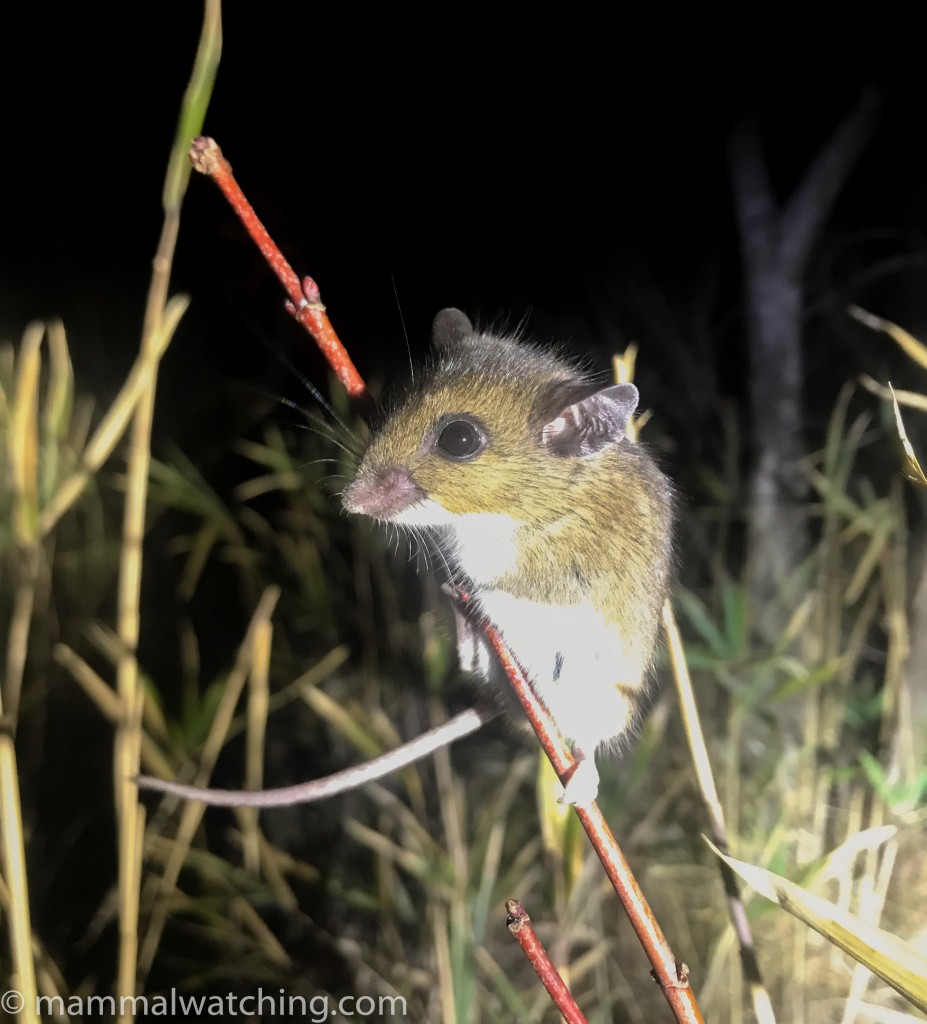
White-footed Mouse, Peromyscus leucopus
We saw plenty of White-tailed Deer, Raccoons, Opossums and Nutria (Coypu). But no wolf.
At 10pm, as we were starting to head back to Nag’s Head, a large canid crossed the road in front of us. It hunkered down behind the crash barrier. Unmistakably a Red Wolf: the large radio collar around its next put to bed any nagging doubts it might be a large Coyote. We watched for a few minutes and let it be.
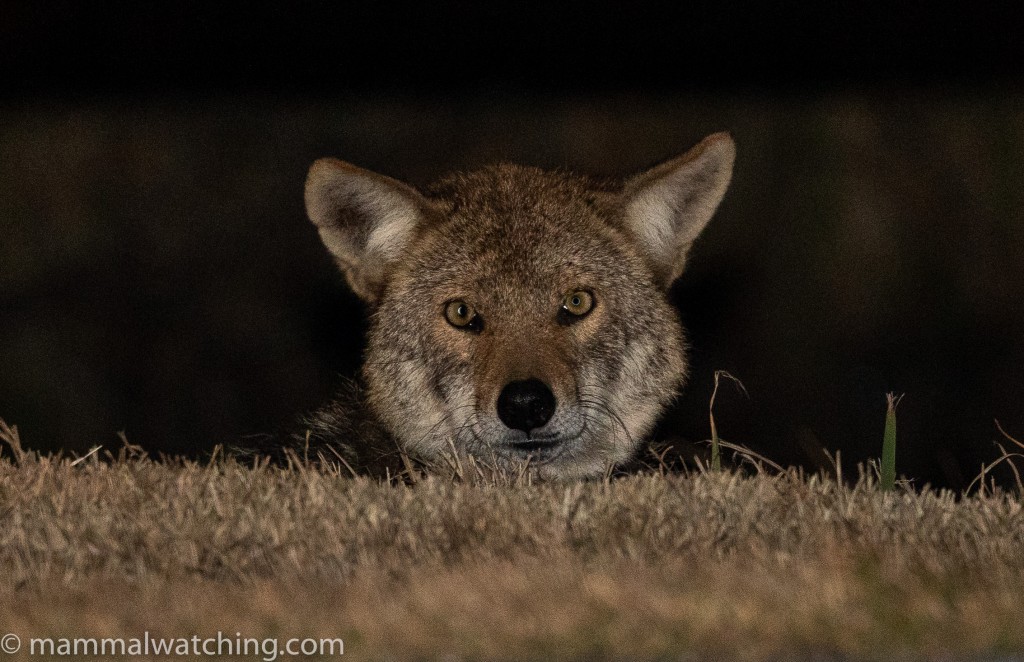
Red Wolf, Canis rufus
The animal seemed quite street wise: just as well given a vehicle shot down the road at 60mph every minute or two. No wonder road traffic is the leading cause of wolf mortality.
Fantastic stuff. One of the world’s rarest mammals and I guess the world’s rarest carnivore. Delighted to have the wolf in the bag we return to Nag’s Head and my thoughts turned to Golden Mice,
The Great Dismal Swamp
The next day we drove through the park once again, stopping to admire thousands of Tundra Swans, more Otters and an insomniac Virginia Opossum.
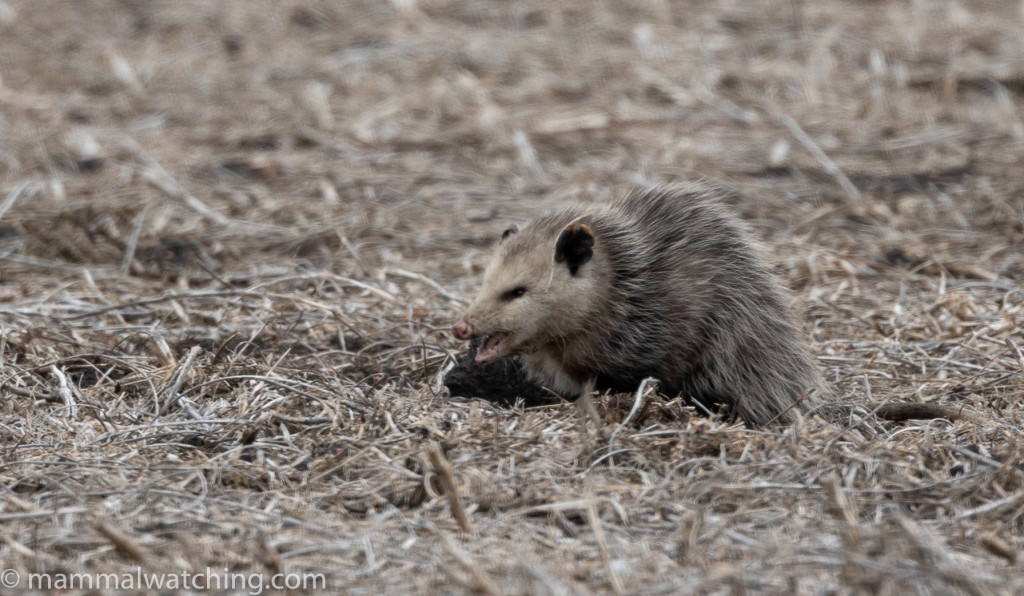
Virginia Opossum, Didelphis virginiana
In the afternoon we drove two hours to the Great Dismal Swamp National Wildlife Refuge. Whoever named it was having a bad day because it seemed really not at all dismal in the afternoon sunshine. We were heading to a property a few miles from the edge of the swamp, where Todd’s friends Floyd and Signa Williams live. They’d both spent many years working for North Carolina State Parks.
When we’d told Todd a month earlier that Golden Mice were on our wish list he rose to the challenge. He’d never seen a Golden Mouse but that just added to the challenge. Todd put out word among his considerable network that he was in the market for a Golden Mouse. In the North Carolina mammalwatching Mafia, Don Pusser is clearly the capo dei capi.
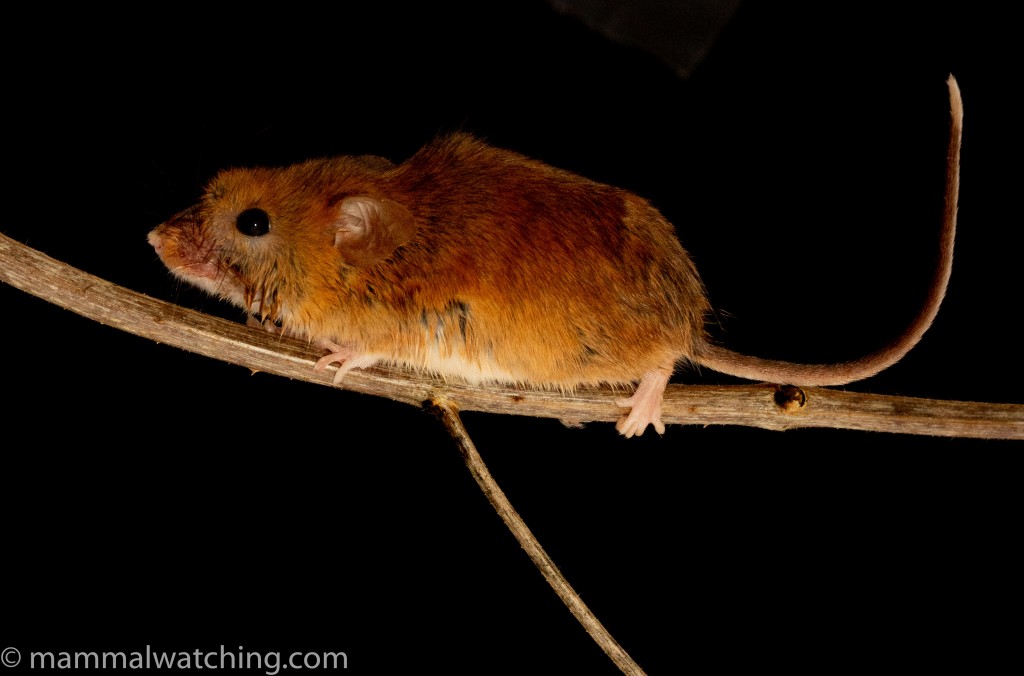
Golden Mouse, Ochrotomys nuttalli
Floyd and Signa told Todd they had seen the mice on their property. And with some encouragement they discovered a dozen nests close to their house. Todd set up camera traps and quickly had proof that the mice were in residence. All I needed to do was turn up.
So by this point you might be wondering why would Todd do all this for us? I know I was. The answer seems to be that Todd is just a very helpful guy who enjoys being a champion for his home state’s ample natural treasures. Needless to say, he is now in the mammalwatching hall of fame.
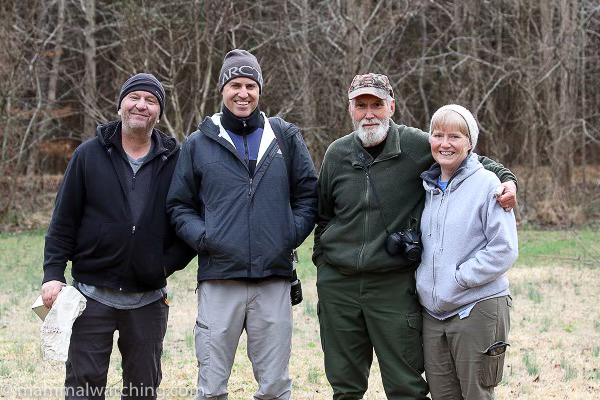
Jon, Charles, Floyd and Signa. Photo by Todd.
Golden Mice build small spherical nests in trees: the nests we saw had a diameter of about 8″ and were between 4 and 8 feet off of the ground in small trees along the edge of a swamp. Once we knew what to look for the nests were not all that hard to spot, though they would be trickier to find later in the year when there is more foliage.
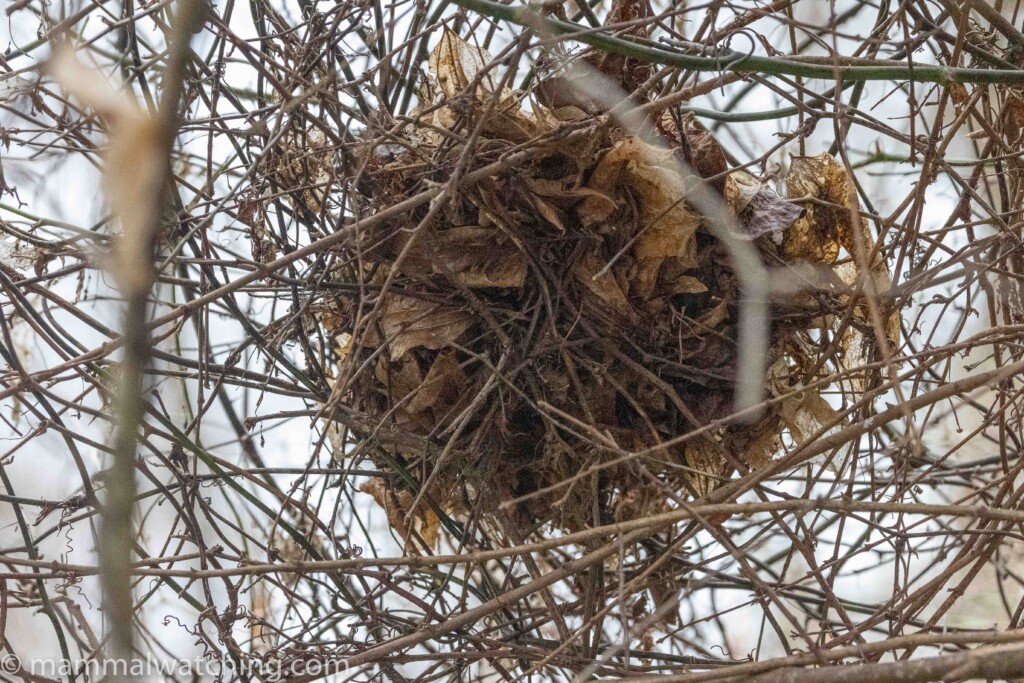
Golden Mouse nest
We set some traps, had a beer and waited for the sun to set.
Despite the density of nests, the mice were not as easy to see as we had hoped. Perhaps in part because it was unusually cold: we wondered if the mice had decamped to underground burrows to escape the close to freezing temperatures.
We did eventually spot a couple of mice sitting close to nests using our thermal scopes. I got a decent enough look at one to be sure it was a Golden Mouse, but we hoped to have much better views in the morning when we checked the traps. This is a species that deserves to be seen up close.
Later that evening we discovered if you want to eat in Nags Head after 10pm in February you had better be OK with McDonalds.
We returned to Floyd and Signa’s place the next morning. There were an impressive five species of rodents in the traps. Todd wanted photos. And so we were treated to a rodent photography master class using a “photo product tent” and Todd’s photographic genius.
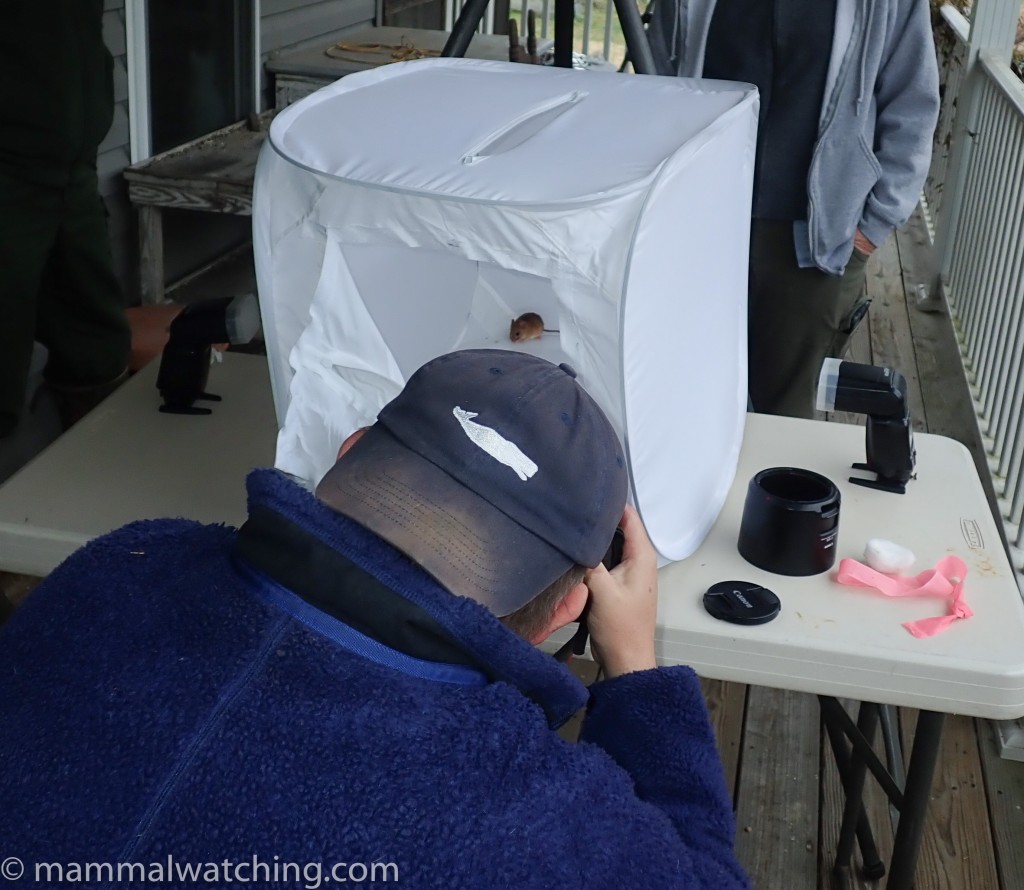
Mouse glamour shoot
With Todd’s help my mouse pictures were about 1000% better than usual. Seems that spending more than my usual two minutes taking a picture of a mouse I am holding produces better results. Who knew?
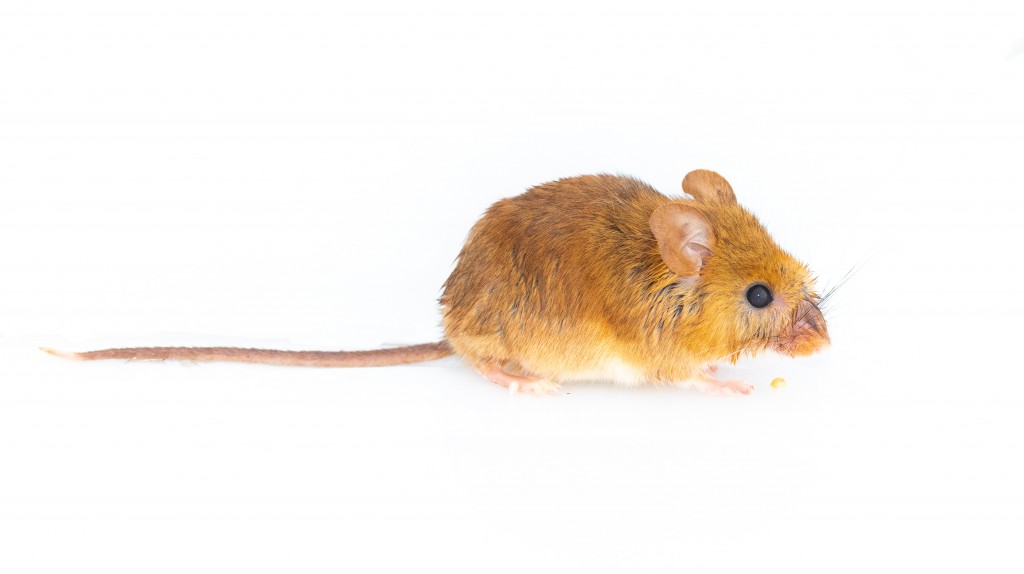
Golden Mouse, Ochrotomys nuttalli
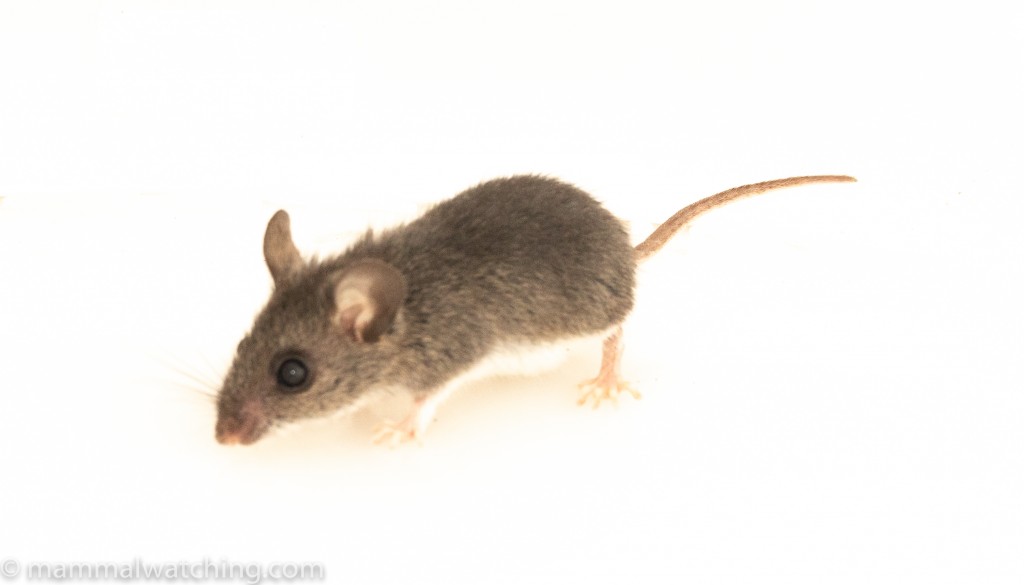
Cotton Deermouse, Peromyscus gossypinus
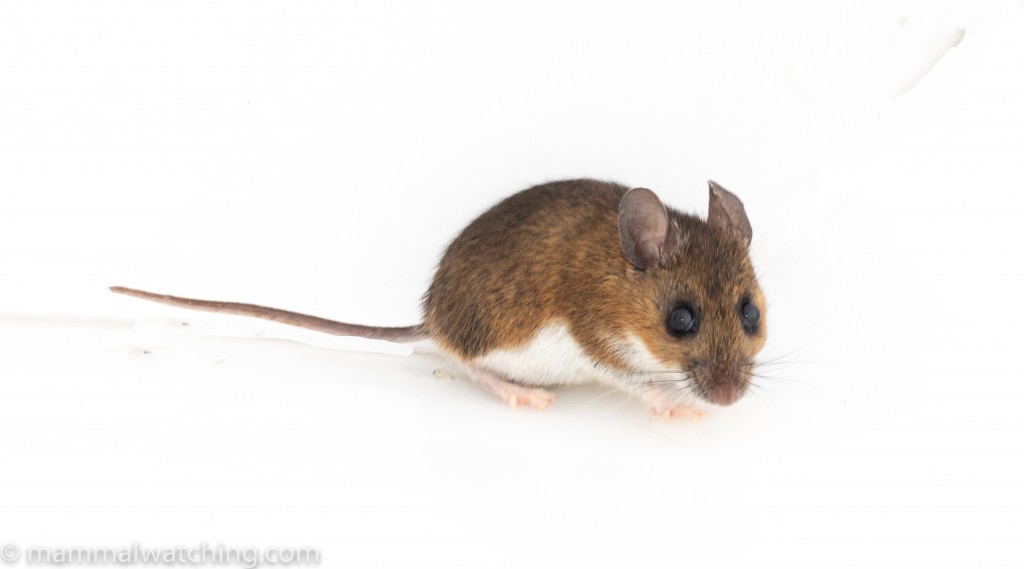
White-footed Mouse, Peromyscus leucopus
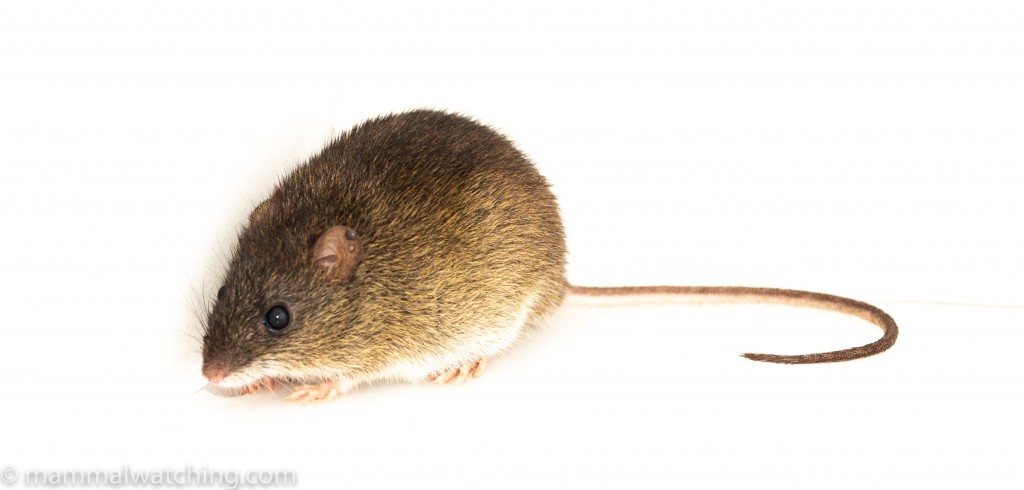
Marsh Rice Rat, Oryzomys palustris
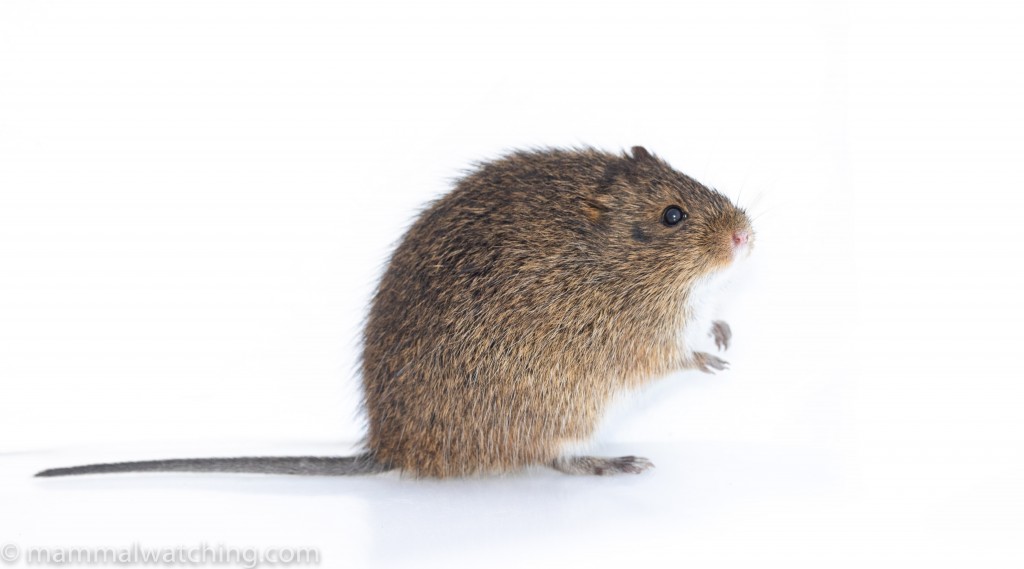
Hispid Cotton Rat, Sigmodon hispidus
We returned the well-fed mice to the forest, all of them doubtless bursting with pride after their photoshoot. We returned to Virginia Beach for our final night.
Marine Life of the Outer Banks
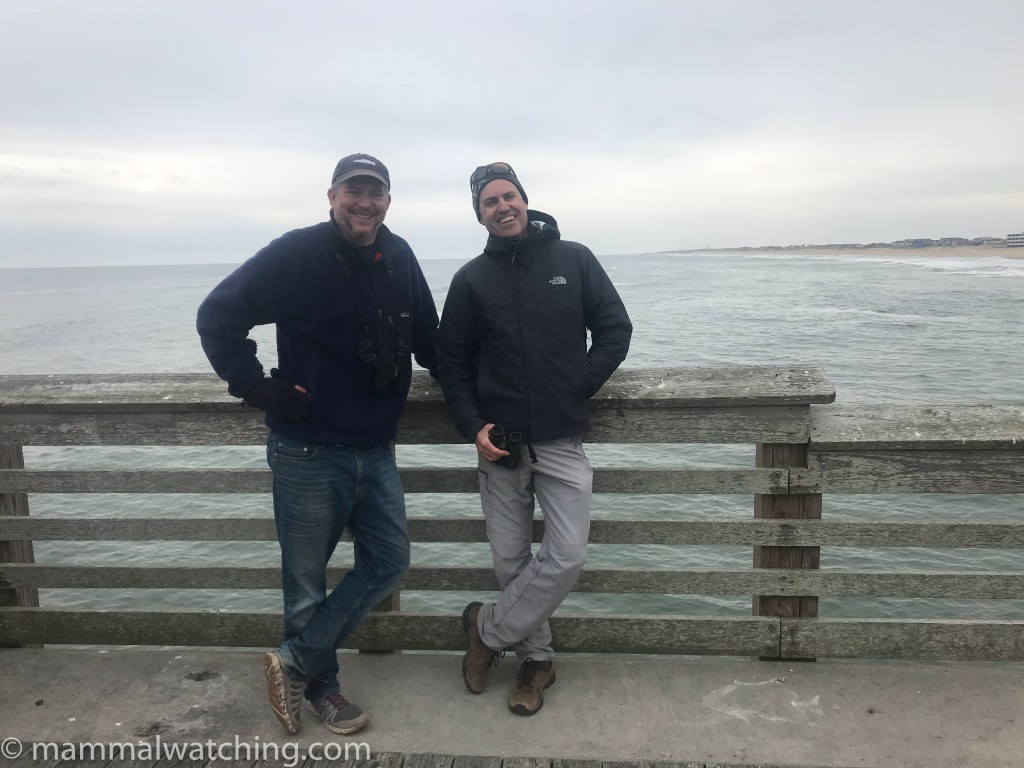
Todd and Charles
We didn’t spend a great deal of time on the Outer Banks themselves, though Todd was keeping track of any interesting marine mammal sightings in case we needed to drop everything and race to the beach.
The chain of islands are a geographic magnet for interesting marine life: they stick out to see at an apex point of the US coastline, and the Gulf Stream is just 15 miles offshore. Todd has done a lot of work monitoring the cetaceans in these waters: an astonishing 35 species of cetacean have been recorded around the Outer Banks and interesting whales, dolphins and seal species often strand. Harp and Hooded Seals, for instance, are not uncommon visitors each winter. We didn’t get lucky but if anything had been spotted that weekend we would have been told.
A very brief seawatch from a Nag’s Head pier produced a few distant Bottlenose Dolphins which can usually be spotted without too much effort.
Thank you
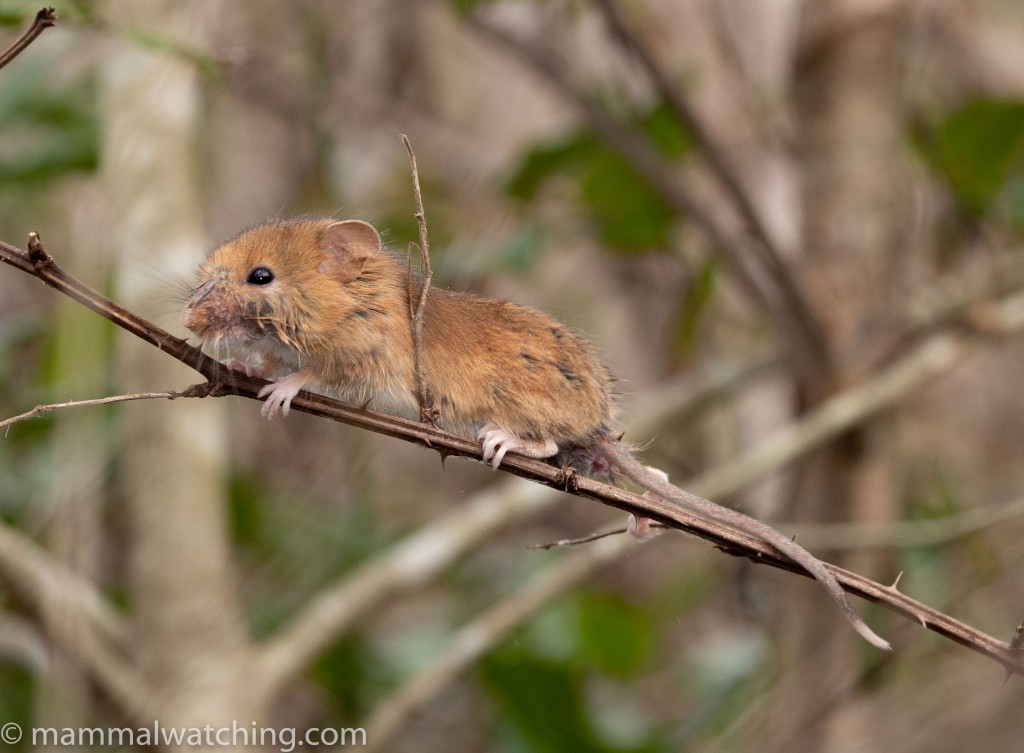
Golden Mouse, Ochrotomys nuttalli
A huge and sincere thank you yet again to Todd Pusser for being so generous with his time, expertise and good company over the weekend, which included him driving many hundreds of miles and finding that Red Wolf. He is a true ambassador for North Carolina’s mammals. Todd proved without doubt that North Carolina deserves a top spot on the list of USA mammalwatching destinations. Many thanks too to Floyd and Signa Williams for helping with all the rodents including my first Golden Mouse, my 1999th mammal species.
Trip List
DIDELPHIDAE
Virginia Opossum (Didelphis virginiana)
ECHIMYIDAE
Coypu (Myocastor coypus)
CRICETIDAE
Golden Mouse (Ochrotomys nuttalli)
Cotton Deermouse (Peromyscus gossypinus)
White-footed Mouse (P.leucopus)
Hispid Cotton Rat (Sigmodon hispidus)
Marsh Rice Rat (Oryzomys palustris)
CANIDAE
Red Wolf (Canis rufus)
URSIDAE
American Black Bear (Ursus americanus)
PROCYONIDAE
Northern Raccoon (Procyon lotor)
MUSTELIDAE
North American Otter (Lontra canadensis)
CERVIDAE
White-tailed Deer (Odocoileus virginianus)
DELPHINIDAE
Common Bottlenose Dolphin (Tursiops truncatus)
12 species. 2 lifers (in bold).
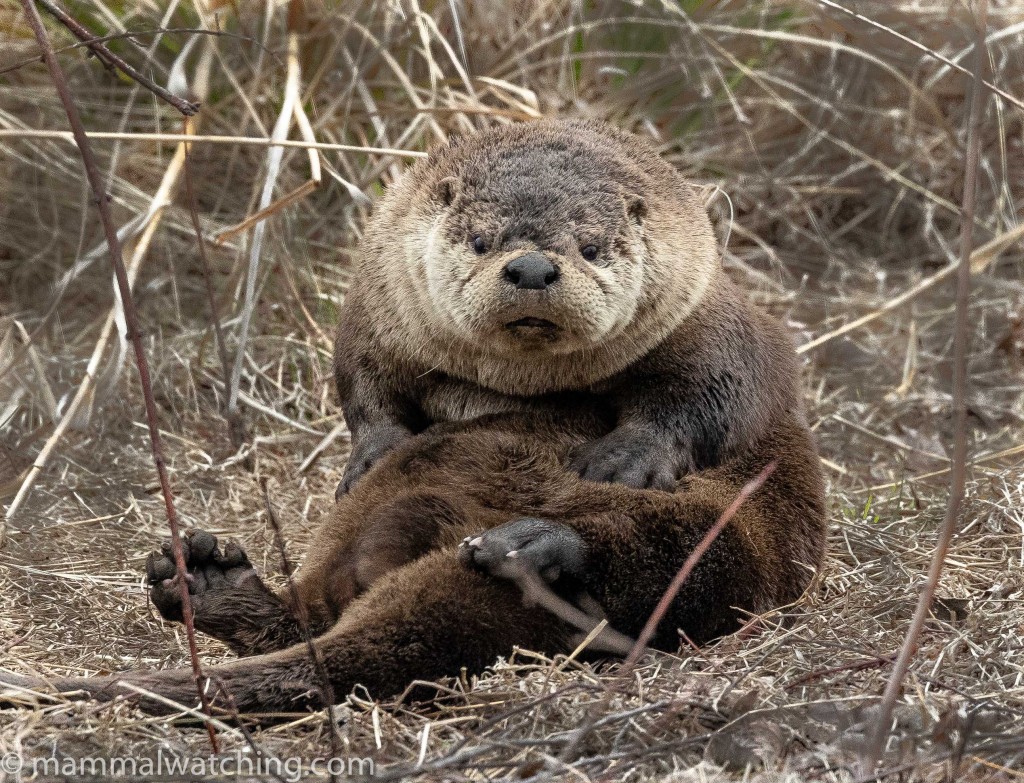
North American River Otter, Lontra canadensis
5 Comments
-
-
Vladimir Dinets
Wow, I looked for red wolves many years ago when the number was much higher and it sill took me something like 12 nights to see one.
-
Andrew Block
Nice Jon. Great stuff. I know what I’m doing the next time I’m down there:-) And that photo tent is exactly what I’ve been needing for taking photos of those little guys. Just ordered one. Wish it were black though. Comes with a black panel but would rather have it all black:-)
Leave a Reply
You must be logged in to post a comment.


Matt Miller
Great report, Jon, and very cool mammals. The situation with the red wolves depresses me. It would seem that giving some space, and protection, to red wolves should be relatively easy as wildlife conservation goes. But predator conservation in the US is always needlessly difficult. A shame. I am glad there are at least some of these animals out there.